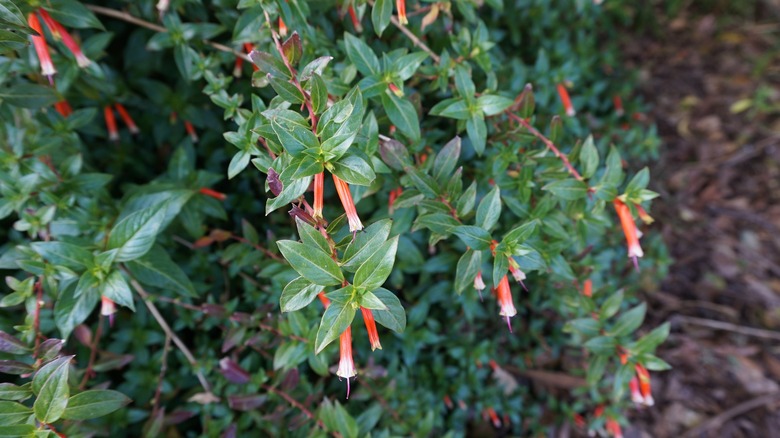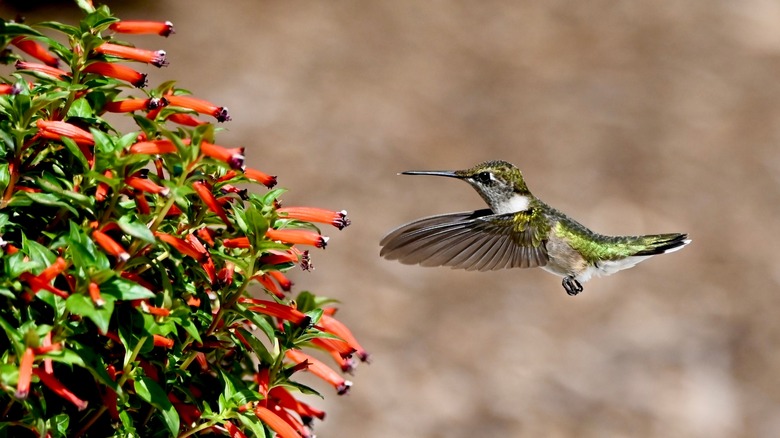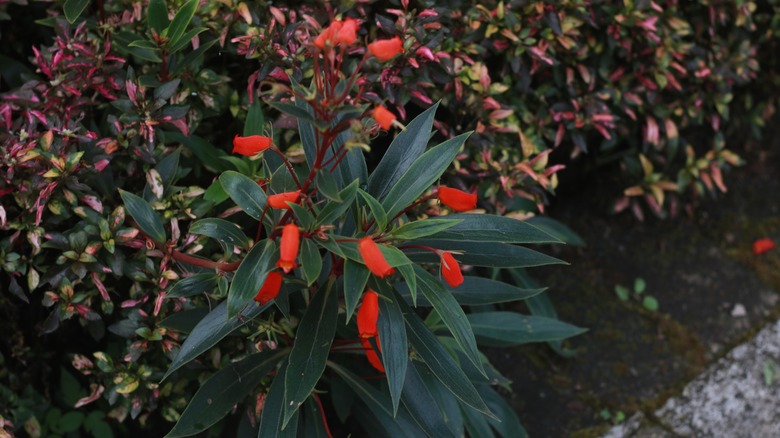Hummingbird's Lunch Cuphea Attracts Pollinators Plus An Additional Bonus
For some gardeners, attracting pollinators ranks high on the priority list. Some simply enjoy seeing butterflies, bees, and hummingbirds visiting their yard, and others are passionate about the environment and want to help those species. If you know you need pollinators to help your vegetable garden grow, you know the value of planting flowers that attract these beneficial creatures. Hummingbird's Lunch Cuphea (Cuphea ignea) certainly fills the role of beckoning pollinators to your garden, plus it adds brilliance to your landscaping with long-term blooms.
Hummingbird's Lunch Cuphea is a hybrid Cuphea species with an impressive blooming season. All the way from early spring through early autumn, gardeners can expect to see the vibrant red blossoms from this plant. In warmer climates, that blooming season extends through the entire year. Originating in Australia, Hummingbird's Lunch Cuphea loves the heat and can even tolerate drought once it's fully established in its space. It grows as a perennial in USDA agricultural zones 8 through 11, or you can grow it as an annual flower in other zones. This long-lasting species is a gorgeous flower you'll want to grow in your pollinator garden.
How to grow Hummingbird's Lunch Cuphea
If you live in zones 8 through 11, you can grow Hummingbird's Lunch Cuphea as a permanent factor in your landscaping – it will come back year after year and grace your garden with its colors through every season! To grow it as a perennial, choose placement carefully. This species prefers full sun and needs soil that drains well. Select a spot in your garden where you can afford a 24 to 36-inch spread. These plants grow in a round shape that pleases the eye as a visual center point or in a garden border. You could also grow this stunning species in a container.
In cooler climates, plant Hummingbird's Lunch Cuphea as an annual each year and enjoy many months of vibrant color in your garden in return. If you prefer, you can plant it in a container and bring it indoors to bloom throughout the winter. You can purchase Hummingbird's Lunch Cuphea to transplant, or you can propagate it from an existing plant using stem cuttings. Expect them to grow between one and two feet tall. During the first season, water regularly to make sure your Hummingbird's Lunch Cuphea establishes a healthy root system. After that, enjoy the low-maintenance habits of this drought-tolerant flower.
More on Hummingbird's Lunch Cuphea benefits
Why do pollinators love this showy flower so much? For starters, their tubular shape is ideal for hummingbirds to feed from or for bees to take a little rest from a busy day. The vibrant red color also helps hummingbirds spot them among other plants. These nectar-rich blooms are a must-have in your garden design if you hope to catch a glimpse of hummingbirds. Since they bloom for such a long season, hummingbirds will keep returning to your yard to sip crucial nutrients that can otherwise be difficult to find during the early spring and fall.
Not only does providing nectar for pollinators help your local ecosystem, it can also boost your garden's performance. Vegetables like squash rely on pollinators in order to produce fruit as opposed to staying stagnant in their flowering state, so drawing them in is a win-win. Plus, hummingbirds aren't just gorgeous to look at – they're also essential for pest control and can help eat through your population of mosquitoes, fruit flies, aphids and more, which means that attracting hummingbirds to your yard could save you from itchy bites.
A final benefit of Hummingbird's Lunch Cuphea is, of course, its appearance. Who doesn't want to be the first one on the block with vibrant blooms each spring? Whereas many flowering plants offer limited payoff and only a couple of months of color, this low-maintenance species is well worth the effort of planting.


